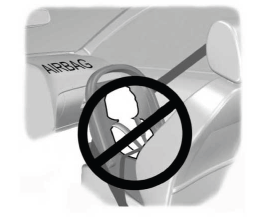Lincoln Aviator: Engine Emission Control - 3.0L EcoBoost / Description and Operation - Engine Emission Control - System Operation and Component Description
System Operation
Positive Crankcase Ventilation (PCV) System
The PCV system circulates crankcase gases through the intake air system into the engine where they are burned. The PCV system regulates the amount of ventilated air and blowby gases to the intake manifold.
The PCV system equipped with a removable PCV valve, a PCV valve integral to the valve cover, or a crankcase ventilation oil separator, as part of the PCV system. The PCV system on some vehicles will include a crankcase pressure sensor to detect a disconnection of the fresh air hose.
The PCV systems comply with OBD PCV monitoring requirements to prevent accidental disconnection from the valve cover. For more information about the PCV monitor and crankcase pressure sensor, refer to Positive Crankcase Ventilation (PCV) System Monitor in this section.
Positive Crankcase Ventilation (PCV) System Monitor
The PCV system monitor consists of a modified PCV system design. The PCV system is designed to prevent accidental disconnection. High retention force molded plastic lines are used from the valve cover to the intake manifold. The diameter of the lines and the intake manifold entry fitting are increased so that disconnection of the lines may cause an engine to stall. In the event the vehicle does not stall if the line between the intake manifold and PCV system is disconnected, the vehicle has a large vacuum leak that causes the vehicle to run lean at idle. The lean condition illuminates the MIL and stores a lean bank 1 or bank 2 DTC.
The PCV monitor sets a DTC if the PCV vacuum hose is disconnected, or if a large air leak between the throttle body (TB) and intake valves is present. An idle speed symptom may be present when the DTC is set.
The PCV system includes a crankcase pressure sensor to detect a disconnection of the fresh air hose. A disconnection of the fresh air hose would allow the discharge of crankcase vapor into the atmosphere while the engine was under boost. The fresh air hose connects the intake air system to the valve cover, with the crankcase pressure sensor mounted in the fresh air hose. The PCV monitor will detect a fresh air hose disconnection at the intake air system or the valve cover, by monitoring crankcase pressure sensor changes during engine cranking, and driving with higher intake airflow.
For additional PCV information, refer to Positive Crankcase Ventilation (PCV) System in this section
Component Description
Crankcase Pressure Sensor
The crankcase pressure sensor measures the vacuum in the PCV system. A change in the PCV system vacuum greater than a calibrated threshold indicates the PCV system is disconnected and will set a DTC. The crankcase pressure sensor is located in the PCV system hose between the intake air system air cleaner and the engine crankcase PCV inlet.
On some vehicles, the CKCP has one digital signal output from the sensor. There is one reference voltage circuit and one signal return circuit for the sensor. For all others, the CKCP has one analog signal output from the sensor. There is one reference voltage circuit and one signal return circuit for the sensor.
 Diagnosis and Testing - Crankcase Ventilation
Diagnosis and Testing - Crankcase Ventilation
Diagnostic Trouble Code (DTC) Chart
Diagnostics in this manual assume a certain skill level and knowledge of Ford-specific diagnostic practices.REFER to: Diagnostic Methods (100-00 General Information, Description and Operation)...
Other information:
Lincoln Aviator 2020-2025 Owners Manual: Tire Pressure Monitoring System Sensors - Vehicles With: 433 MHz Sensors
Argentina Brazil Djibouti European Union EU Ghana Jordan Mauritania Mexico Moldova Morocco Nigeria Oman Pakistan Paraguay NR: 2018-06-I-000224 Philippines Russia Serbia Singapore South Africa South Korea R-CRM-SRD-AG2SM4 Taiwan Ukraine United Arab Emirates (U...
Lincoln Aviator 2020-2025 Service Manual: Description and Operation - Message Center - System Operation and Component Description
System Operation System Diagram Item Description 1 BCM 2 Door/liftgate ajar switches 3 GWM 4 Fuel pump and sender unit 5 IPC 6 APIM 7 Washer fluid level switch 8 Message center display 9 IPMA 10 PCM 11 Engine oil pressure sensor 12 Ambient air temperature sensor 13 AWD module 14 ABS module 15 PAM 16 IPMB 17 Brake fluid level switch 18 Hood ajar switch 19 RH steering wheel switch 20 SCCM 21 SIMA 22 SODL 23 DCMG 24 DCMH 25 HCM 26 RCM 27 PSCM 28 GSM 29 SODR 30 HVAC module 31 TRM 32 DSM 33 DCME 34 DCMF Network Message Chart Module Network Input Messages - IPC Broadcast Message Originating Module Message Purpose Active park assist warning message request IPMB (with 360° camera)/ PAM (without 360° camera) Input used to display the active park assist warning message...
Categories
- Manuals Home
- Lincoln Aviator Owners Manual
- Lincoln Aviator Service Manual
- Drive Modes
- Description and Operation - Jacking and Lifting
- Description and Operation - Body and Frame
- New on site
- Most important about car
Children and Airbags
WARNING: Airbags can kill or injure a child in a child restraint. Never place a rear-facing child restraint in front of an active airbag. If you must use a forward-facing child restraint in the front seat, move the seat upon which the child restraint is installed all the way back.


